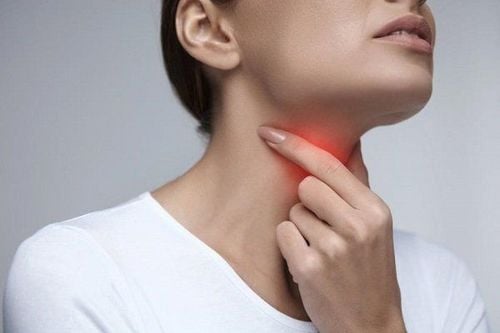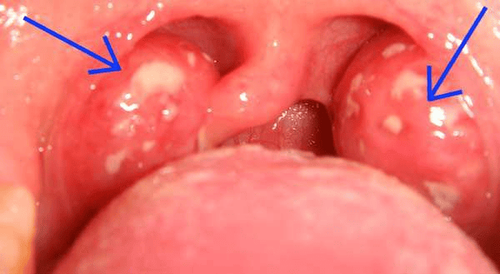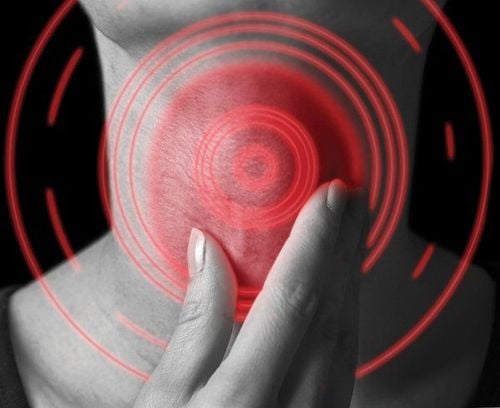This is an automatically translated article.
The article was professionally consulted with Specialist Doctor I Le Van Quang - Department of General Surgery - Vinmec Nha Trang International General HospitalVocal cord polyps are small polyps in the vocal cords located on the medial border of the larynx. Polyps are usually the size of a sheet seed or the size of a green pea. The disease can occur at any age, especially adults. The disease directly affects the voice, if not treated definitively can lead to prolonged hoarseness.
1. What is vocal cord polyp? Is it dangerous?
The larynx is located between the base of the tongue and the windpipe. The larynx can be called the vocal box because it contains the vocal cords. The muscles of the larynx stretch and stretch when you breathe, causing them to form a V-shape to let air through.
Laryngeal polyps are small polyps in the vocal cords located on the medial margin of the larynx. Polyps are usually as big as a sheet seed or sometimes the size of a green pea, usually located in the middle third of the vocal cords, smooth, berry shape, pinkish-white in color.
Harmful effects of polyps on the vocal cords are to make the patient's voice, especially, the patient's job as a teacher, singer, tour guide, broadcaster, salesman... chronic hoarse or change voice. The disease does not become malignant (cancerous), does not endanger the patient's life, but the disease does not heal spontaneously.
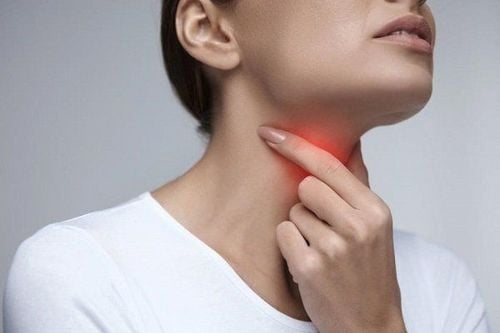
Tác hại của polyp dây thanh quản là làm cho giọng nói của người bệnh bị khàn tiếng mãn tính hoặc đổi giọng
2. Causes and signs to recognize
Causes:
Most of the time, polyps in the vocal cords are caused by edema with many different causes such as: throat infection, talking a lot, talking loudly for a long time, abuse of the voice or due to occupations such as teaching. People who often smoke and drink alcohol: According to experts, people who have a habit of smoking are those who drink a lot and often, will cause the pharynx, vocal cords to be irritated, excessive damage leads to the formation of vocal cord polyps. Vocal cord polyposis can also be caused by epithelial or connective tissue hyperplasia or laryngeal mucosal hyperplasia. Vocal cord polyps may be caused by persistent chronic laryngitis. A favorable factor mentioned is that there is mechanical stimulation by the impact of excessive strain on the vocal cords, which in turn leads to small blood vessels in the vocal cords to rupture causing bleeding, consequent vocal polyps. management appeared. The disease can be caused by a cold or an acute, chronic pharyngitis that is not treated definitively, lasts for a long time, and recurs many times, leading to polyps in the vocal cords. Hormonal changes: During menstruation, women often have hormonal changes, irregular blood gas regulation, and slight bleeding in the vocal cords. If you talk a lot, speak loudly, yell, it will cause damage to the vocal cords and easily develop vocal cord polyps. Recognizing signs:
Hoarseness is the first symptom that appears, because the two vocal cords cannot close, the vocal cords vibrate unevenly, leading to hoarseness when the patient speaks. The degree of hoarseness completely depends on the size of the polyp, the larger the polyp, the wider the glottis gap. Therefore, when speaking, the voice becomes more hoarse. Due to hoarseness, the more you speak, the more breath you lose, the patient will often be very tired, short of breath and unable to speak for a long time. Hoarseness at first only occurs in waves, gradually, hoarseness occurs continuously. The severity and lightness of hoarseness depends on the size of the vocal cord nodules and the degree of myasthenia gravis of the vocal cords. With the type of polyp with legs, when speaking, the polyp can move when the glottis is closed and opened, so the patient has a feeling of being stuck in the throat like a hair or something obstructs the spit, making the polyp more edematous. , the voice is more hoarse. In addition to hoarseness, the patient may have shortness of breath, loss of breath, and dry cough. However, it is very rare to find patients with complete loss of voice and difficulty breathing in the larynx due to polyps.
3. Treatment of vocal cord polyps
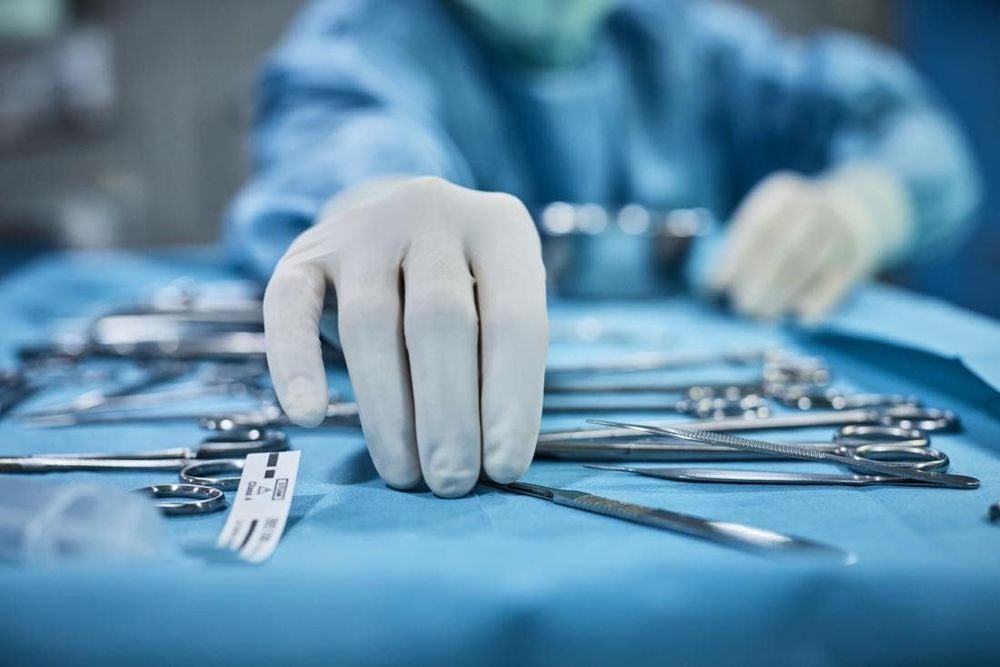
Sự can thiệp của phẫu thuật liên quan đến việc loại bỏ polyp từ dây thanh quản
Vocal cord polyps can be treated surgically and with behavioral or voice therapy.
3.1. Surgical treatment Surgical intervention involves removing polyps from the vocal cords. This approach only occurs when the polyp is very large or has existed for a long time. Surgery is rare in children.
Removal of vocal cord polyps has many methods. In which, there are 2 commonly used techniques:
Indirect laryngoscopy to cut polyps with Frankel pliers for polyps with small stalks. Direct laryngoscopy to remove polyps with a laryngeal microsurgery instrument, or to remove polyps under a surgical microscope (microsurgery) or to remove polyps with a CO2 laser. Medical problems can be treated to reduce the effects of vocal cords, including treatment for gastroesophageal reflux disease (GERD), allergies, and thyroid problems.
3.2. Speech or Behavioral Treatment Many people need behavioral intervention or speech therapy. Voice therapy involves reducing/stopping speech abuse and direct speech therapy to change pitch, loudness, or breathing exercises for a better voice. Stress reduction techniques and relaxation exercises are also taught.
During the treatment of laryngeal polyps, the patient should limit speech to help calm the larynx, reduce the impact on the vocal cords, and reduce edema in the vocal cords. In case the voice must be used (teachers, singers...) should use supporting tools such as mic, speaker...
Medical intervention to quit smoking or manage stress.
4. Prevention of vocal cord polyps
To prevent the risk of polyps in the vocal cords, it is necessary to avoid smoking, drinking alcohol, drinking coffee, too much stimulants, eating cold foods, and avoiding spicy and hot foods. Avoid talking loudly, screaming, causing throat irritation. People who are often exposed to toxic and polluted chemicals should use medical masks to limit the level of toxicity. Gargle with salt solution to avoid throat diseases such as pharyngitis, laryngitis.... Vinmec International General Hospital is one of the hospitals that not only ensures professional quality with a team of leading doctors, modern equipment and technology, but also stands out for its examination and consulting services. and comprehensive, professional medical treatment; civilized, polite, safe and sterile medical examination and treatment space.
Please dial HOTLINE for more information or register for an appointment HERE. Download MyVinmec app to make appointments faster and to manage your bookings easily.




